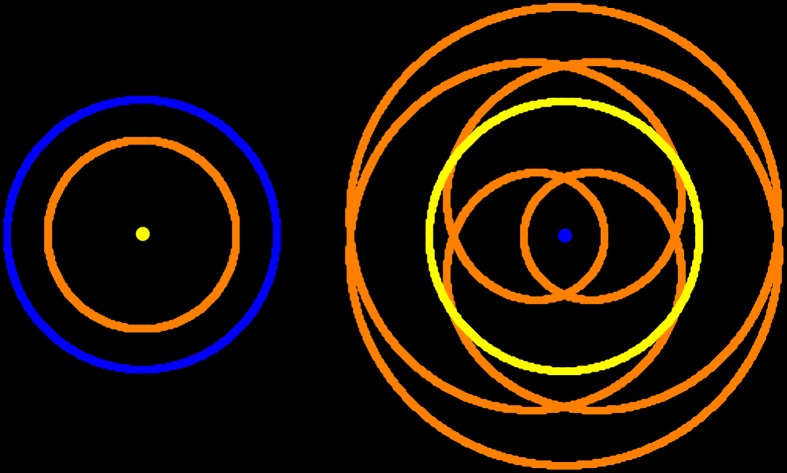Figure 1.
Simplistic schematic of the heliocentric model (left) and the geocentric model (right). The motion of the Sun (yellow) and the planets Earth (blue) and Venus (orange) is shown. Under the heliocentric model both Earth and Venus have simple circular orbits around the Sun. In contrast, under the geocentric model Venus describes a complicated (albeit beautiful) path. The heliocentric model is by far the more parsimonious explanation for our observation of the motions of celestial bodies, especially when taking Newtonian physics into account. It is important to note that this heliocentric model is not the “true” model as for instance the orbits are not circular and the planets do not strictly revolve around the center of the sun. However, it is certainly the better model of the two as it requires fewer assumptions.

